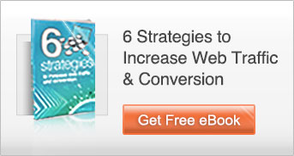 If you’re not an Xzito Client and you’re reading this article, chances are that your website isn’t generating the web traffic, fresh sales leads, customer conversions, and social network excitement you want.
If you’re not an Xzito Client and you’re reading this article, chances are that your website isn’t generating the web traffic, fresh sales leads, customer conversions, and social network excitement you want.
As the CEO, Marketing, or Sales Leader of your organization, you have the power to find the solution best able to turn your website into a mighty force behind company growth and importance, BUT web design it’s only a piece of the puzzle. Other key factors that guide the best website redesigns include:
- Understanding important metrics that will guide on your site structure
- Designing and creating content around your ideal buyer personas
- Creating eye-catching Call-to-Actions (CTAs) to convert visitors into leads
We explain these factors in more detail in our blog article: Redesigning Your Website? Turn Your Web Design Project into a Lead Generating Machine.
There’s no doubt a connection exists between your web design and its ability to generate sales leads. So, if web design is only a piece of the puzzle, how else can your web site generate more web leads?

Great question! If you took our advice and added some of the factors we mentioned in our blog about web design, you’re well on your way to creating a lead generating machine. But, like all powerful machine, without fuel, how can it do its job? In other words, even though you have some of the elements you need to convert visitors into leads, if you have no visitors, whom are you going to convert? So, in order to do its job, your web site needs to attract visitors to convert them into leads.
The online fuel your website needs to attract leads are online strategies that include Search Engine Optimization (SEO), blogging, social media, and Pay-Per-Click (PPC). You’ve probably heard of some of these. To refresh your mind, here are some brief explanations of each:
Search Engine Optimization (SEO)
SEO is the online strategy that helps your prospects find you when they are searching for your products or services online. SEO consists, in part, of keyword research, on-page optimization, and off-page optimization. In general terms, the way it works is that after you’ve selected the keywords you think your prospects are using to find your products or services on the search engines, you optimize the page properties of your web pages (URL, page titles, meta descriptions, etc.), which is the on-page optimization. Then, optimization comes next. This involves activities occurring outside your web site, such as creating links back to your site to help increase and maintain ranking on the search engines.
Blogging
Blogging gives you the opportunity to connect with your prospect and customers by providing answers and information they might need to make a purchasing decision. This information could be about your company, products, services experiences, and knowledge. In addition, it helps you create natural links back to your site, which will help your ranking on the search engines. According to HubSpot, companies that blog attract 55% more site visitors, 97% more inbound links and 434% more indexed pages. Further, companies that blog achieve 126% more lead growth than companies that don’t.
Social Media
 I’m sure you’ve heard of this one. So, how can it help you attract visitors to your web site? Social media gives you an opportunity to connect and develop a relationship with your prospects and customers. This relationship sets the ground for conversations and interactions with your company, and it’s a channel to lead them to your web site. How? You can share your blogs and other helpful resources with a link back to your site! Isn’t this great?
I’m sure you’ve heard of this one. So, how can it help you attract visitors to your web site? Social media gives you an opportunity to connect and develop a relationship with your prospects and customers. This relationship sets the ground for conversations and interactions with your company, and it’s a channel to lead them to your web site. How? You can share your blogs and other helpful resources with a link back to your site! Isn’t this great?
Pay-Per-Click (PPC)
PPC can complement your SEO and other marketing activities. PPC gives you an opportunity to show up on the first page of the search engines and target your message and/or promotion to a very targeted audience not only in search engines but also in social media platforms such as Facebook and LinkedIn.

Word of CAUTION!
Don’t over-fuel your machine. In better words, as the operator of the machine, don’t get overwhelmed with all these online strategies. Evaluate your capabilities and resources both, human and technological. Then, determine which one makes the most sense. But, don’t expect your machine to work, if you don’t put any fuel in it either.
What fuel have you used on your website? What strategy has worked best for you? Share your experience in the comments below!
Learn about these and other online strategies in more detail in our EBook: 6 Strategies to Increase Web Traffic and Conversion










